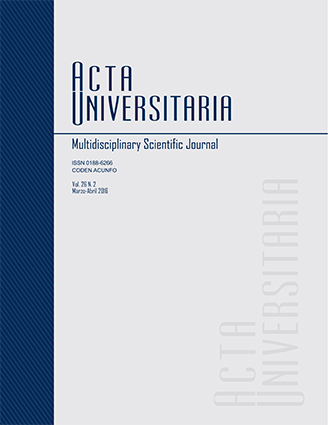Published 2016-05-17
Keywords
- Fluoride,
- gamma alumina,
- activated carbon,
- drinking water.
- Fluoruro,
- gamma alúmina,
- carbón activado,
- agua potable.
How to Cite
Abstract
Fluoride compounds are widely distributed in nature and are generated in many industrial processes. In many parts of the world, significant causes of diseases are associated with elevated concentrations in drinking water. In comparison with other techniques, adsorption onto a solid surface (activated alumina, activated charcoal, zeolites, etc.) is a simple, versatile, and appropriate process for removal the fluoride. In this study, we synthesized Gamma alumina (γ-Al2O3) by homogeneous precipitation and compared its effectiveness at removing fluoride from water to a commercial brand activated charcoal. Process was carried out at pH 5 and 7. Fibrillar morphology of the γ-Al2O3 powder presents high porosity in comparison with the activated charcoal that has many small pores in its compact structure. Mesoporous γ-Al2O3 powder has a lower surface area (332 m2 · g–1) than microporous charcoal powder (601 m2 ·g–1), as determined by both gas nitrogen adsorption-desorption and scanning electron microscopy. However, γ-Al2O3 has a higher zeta potential and lower particle size than that determined for the activated charcoal. Adsorption isotherms of the fluoride removal concur with the Langmuir model for both adsorbents. γ-Al2O3 removes up to 95.5% of fluoride ions, significantly more than the activated charcoal (26%) at pH 5. Thus, based on results obtained, the adsorption process is controlled by the diffusion of fluoride ions in liquid immediately adjacent the outer surface of the adsorbent material.
References
- permisibles de calidad y tratamientos a que debe someterse el agua para su potabilización. Retrieved from
- http://www.salud.gob.mx/unidades/cdi/nom/127ssa14.html
- Russo, C. R. (2009). The effects of exercise on bone. Basic concepts and implications for the prevention of fractures. Clinical Cases in mineral and bone metabolism: the official journal of the Italian Society of Osteoporosis, Mineral Metabolism, and Skeletal Diseases, 6(3), 223-228.
Turner, C. H. (1998). Three rules for bone adaptation to mechanical stimuli. Bone, 23(5), 399-407.

